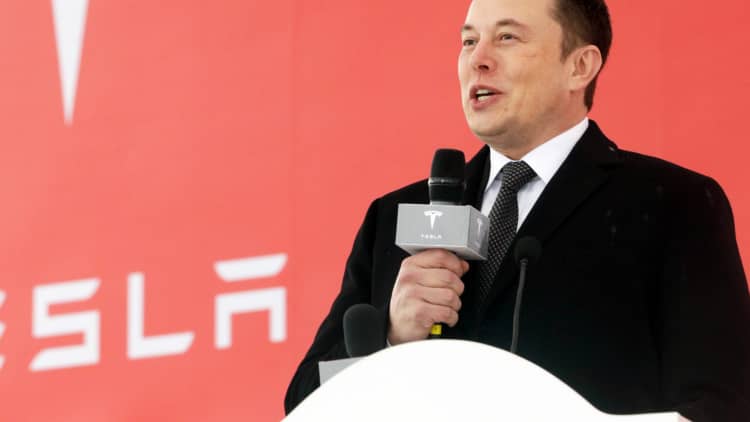During Wednesday's investor call for his public car company, CEO Elon Musk took a rare moment to talk about his private rocket company.
Musk explained that the recent layoffs at SpaceX were different than those at Tesla, the latter of which he said came from the need "to be relentless about costs" to keep the electric vehicles "affordable."
Rather, Musk said the SpaceX layoffs were due to the company's "two absolutely insane projects:" Starlink (a network of thousands of tiny satellites intended to bring global high-speed internet coverage) and Starship (the enormous rocket SpaceX is building to transport humans and cargo to-and-from Mars).

Starlink and Starship would more than "bankrupt the company" if SpaceX did not reduce costs, Musk said.
"And so, SpaceX has to be incredibly spartan with expenditures until those programs reach fruition," Musk added.
This was Musk's full quote about SpaceX during the Tesla fourth-quarter earnings call:
"On the SpaceX side, the cost reduction was for a different reason unrelated to – SpaceX has two absolutely insane projects that would not only bankrupt the company. There's Starship and Starlink. And so, SpaceX has to be incredibly Spartan with expenditures until those programs reach fruition."
SpaceX this month laid off about 10 percent of its workforce, or more than 600 employees, across all its departments. SpaceX said in a statement that there are "extraordinarily difficult challenges ahead" if the company is "to succeed in developing interplanetary spacecraft and a global space-based Internet." Musk and President Gwynne Shotwell announced the layoffs at an all-hands meeting on Jan. 11. The company offered assistance with job hunting and resume-writing, as well as other severance benefits.to those who were let go. SpaceX now employs about 6,400 people, CNBC reported.
Starlink is one of the keys to the financing SpaceX's future endeavors. Musk's company is going head-to-head with several other proposed constellations of satellites, which all promise to provide high-speed broadband internet to anywhere in the world. In March, the FCC gave SpaceX permission for its plan to launch 4,425 satellites into space. SpaceX launched the first two test satellites last February.
Starship is the giant rocket SpaceX is building to send humans and cargo to Mars. A prototype "hopper" Starship is being built at SpaceX's facility near Brownsville, Texas – although the company is facing a setback in Starship's development after the top half of the rocket blew over. Musk said the damage will take "a few weeks to repair."
2019 promises to be another banner year for SpaceX. The company ended a record-breaking 2018 with the company's 21st launch of the year, sending up the first of the Air Force's new network of GPS (Global Positioning System) satellites.
Beyond the Starlink and Starship programs, SpaceX is focused on readying the Crew Dragon capsule for its maiden launch. Built as a part of NASA's Commercial Crew program, Crew Dragon is aiming for a first test launch sometime in the next month. If all goes according to plan, SpaceX will then put NASA astronauts on Crew Dragon for the second test launch – possibly representing the first time U.S. astronauts will launch from U.S. soil since the end of the Space Shuttle program in 2011.
– CNBC's Lora Kolodny contributed to this report.


